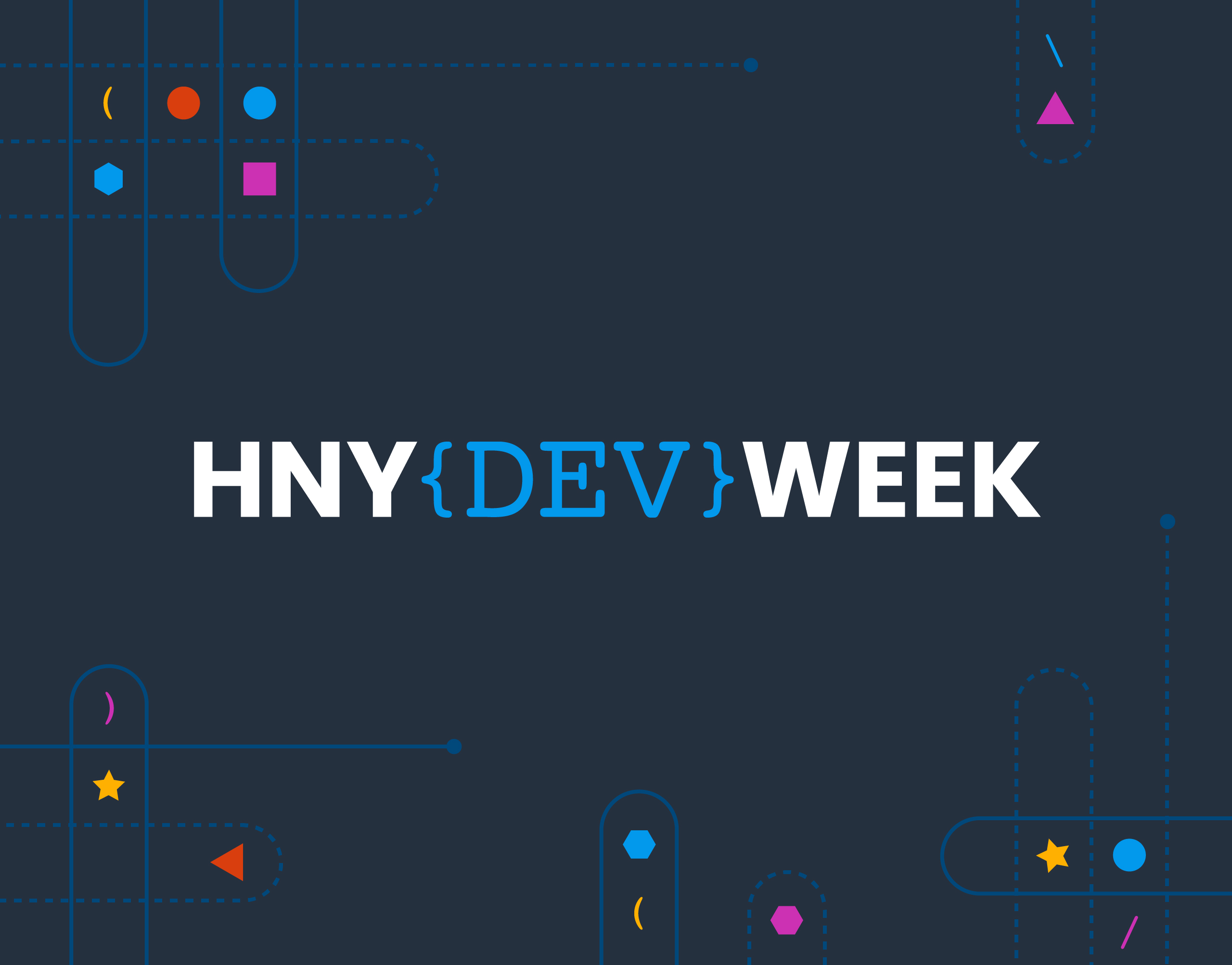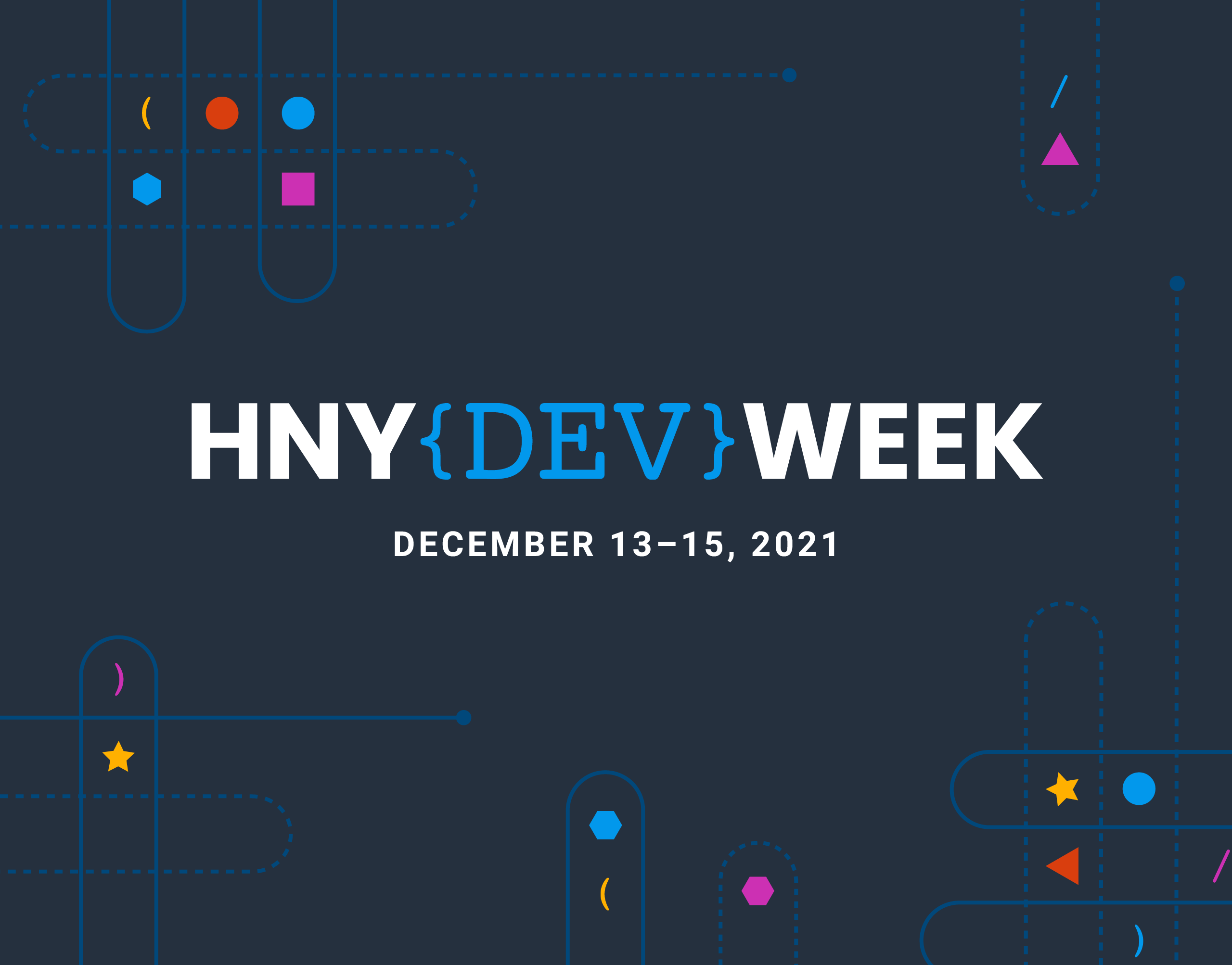We know that you value collaboration. That’s why we share incident reviews and learnings—because we believe the entire community benefits by working together transparently.
In the spirit of working better together, we invited ecosystem partners from Apollo GraphQL, Cloudflare, LaunchDarkly, and PagerDuty to present at Honeycomb Developer Week, a three-day event filled with snackable, time-efficient learning sessions to help you uplevel your observability skills.
In this blog, we’ll share some highlights from Day 3, including how Honeycomb works along with tools that are likely already in your workflows, plus a recap of new UI features you’ll want to know about.
New features to help you find the right data you need
We’re always looking for ways to improve Honeycomb for you. Danyel Fisher, User Data Expert at Honeycomb delves into new features released in the past year, including:
- CONCURRENCY: Visualize how many spans are running at a given time. Unlike the COUNT operator that counts only the events that begin within a time period, CONCURRENCY counts all events that cross through the time period.
- RATE_MAX, RATE_SUM, and RATE_AVG: Visualize the rate of change over time of a field.
- Auto query on zoom: Zoom in on a time range on your graph to automatically run a query based on those markers.
- Time-over-time comparison: Compare any set of requests with the similar requests from an earlier comparable time period, for example see how this time window compares to the same time window one week ago.
Other new features include trace-span sharing, marker filtering, viewing error states in tracing, and OpenTelemetery ingestion.
Reliable alerting with PagerDuty
When on-call responders aren’t alerted quickly enough during incidents, valuable time is wasted. Honeycomb’s Liz Fong-Jones and PagerDuty’s Mandi Walls share how you can use Honeycomb Triggers and Service Level Objectives (SLOs) with PagerDuty for quick and reliable alerting.
With Honeycomb Triggers, you can configure thresholds and receive alerts when your system crosses a threshold. For example, you can set a trigger for when a request is taking longer than usual. Once that happens, Honeycomb Triggers sends you a notification immediately. Honeycomb Triggers also lets you see the type of notification, based on the trigger you set, how many notifications you’ve received, and much more.
PagerDuty extends the functionality of Honeycomb Triggers by alerting you (or your responders) via SMS messages and calls in less than a minute, with the ability to set different escalation policies for multiple teams. So, for example, if you’re in the United States, and an incident happens in the middle of the night, your European colleagues can be alerted to handle the issue instead of you needing to wake up to deal with it.
Finally, if you’re running production-quality applications, Liz recommends Honeycomb SLOs because they can help you understand not just the behavior of your service in the past four minutes, but also help you manage your service towards an agreed-upon level of reliability over 30 or 90 days. Plus, with Honeycomb SLOs, you’ll only get alerted if there’s a risk of an issue impacting users.
Watch Liz and Mandy’s full demo for more in-depth details on how Honeycomb and PagerDuty work together.
Using feature flags to deploy more confidently
In her session, Dawn Parzych, Developer Marketing Manager at LaunchDarkly, discusses the differences between deployments and releases, what feature flags are and their importance to a business, and the relationship between feature flags and progressive delivery.
Dawn defined feature flags as “control points in your code whose condition may vary based on external input.” Because rolling back releases can be expensive and involve a lot of time and energy, resulting in unhappy customers, feature flags are key to enabling progressive delivery and happy customers. Progressive delivery means delivering any new changes or features first to small, low-risk users and then expanding to larger and riskier users. Feature flags allow you to restrict the availability of any new feature to a number of low-risk users.
You can then use Honeycomb to observe how those users interact with the feature to ensure it works as expected before progressively delivering the feature to other users. When you integrate Honeycomb with LaunchDarkly, you can see how the feature performs in the real world with the help of Markers. If any issues arise, you can turn off the feature flag and revert users back to a previous version of the service or application.
Building observability in your CircleCI deploy
If you’re deploying with CircleCI, the CircleCI orb for Honeycomb allows you to export your build events from a CircleCI pipeline into Honeycomb quickly and easily so you can visualize the entire process instead of just viewing your build as a list of jobs.
At Honeycomb, we believe your build pipeline should run for, at most, 15 minutes. That’s why we chose CircleCI to help run and validate our builds automatically. Liz Fong-Jones and CircleCI’s Ryan Pedersen demo how Honeycomb works with CircleCI using the Honeycomb orb. With this orb, you can see how long each build takes and run BubbleUp on anomalies to see their properties and how they compare with other related data.
Using Honeycomb to visualize your build events enables you to do so much more: You can choose to view a heatmap of a build event or property over a specific period of time and gain insights into every step of your build to improve your system’s performance.
Graph observability with Apollo GraphQL
In this session, David Pickavance, Senior Sales Engineer at Apollo GraphQL, shows you how Honeycomb provides more visibility into requests and traces. With the help of OpenTelemetry, Honeycomb helps you understand the performance of your graph deep into the data layer.
Apollo Studio is a cloud platform that helps you build, validate, and secure your organization’s graph. It gives you information about your request—its name, query fields, and metrics such as the duration of your request. It also provides metrics reporting and query tracing at the resolver level.
Tracing a query at the resolver level isn’t always enough to troubleshoot an issue, and you might need to go a level deeper to get the information you want. Honeycomb helps you achieve this simply by integrating with Apollo Studio. Once you’ve integrated with Honeycomb, you can explore all of Honeycomb’s features to help you understand how your queries work..
See inside your serverless execution
A serverless architecture offers many benefits—the primary one is eliminating the need to manage infrastructure your application would otherwise use. However, it’s not without its challenges. While deploying serverless code is fairly easy, debugging can be a pain. Since your app is running on an architecture you don’t manage and typically with multiple components talking to each other, it’s often difficult to work out what’s going on, let alone quickly debug.
One of the most popular ways to deploy serverless code is through Cloudflare Workers, and one of their Product Managers, Erwin van der Koogh, demonstrates a simple way to do this. Honeycomb’s integration with Cloudflare Workers enables you to trace requests from your browser to any external service and back. You can then see events occurring within the server and know who’s responsible for what. Regardless of how many servers your application is running on, your request is collected into a single trace.
Erwin walks through how to install and configure the Honeycomb integration. Check out his full presentation to learn how to use it. If you need help or have questions, our developer advocates are ready to assist.
Make your systems observable with Honeycomb
If you missed Honeycomb Developer Week, be sure to also check out our recap from Day 2, where we share highlights from sessions covering a variety of topics, from instrumentation with OpenTelemetry and Honeycomb, to distributed tracing and finding outliers quickly with BubbleUp.
If you’re looking to learn more about how Honeycomb works to help you gain confidence in the code you ship and a better understanding of your app, request a demo, and let’s show you how. Or if you’re ready to jump in, sign up for an account today—it’s free!








